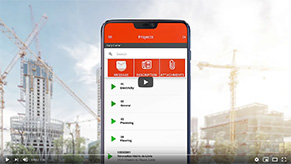
24 December, 2023
Record-Keeping Obligations: How Long Do Construction Industry Employers Have To Keep Their Records?
Due to its complexity and dynamic nature, the construction industry requires meticulous record-keeping to ensure compliance with ever-evolving regulations. In…

29 May, 2023
How To Save Money on Construction Staffing
Construction staffing can be a major expense for contractors, but it doesn't have to be. With the right tactics, contractors…

7 April, 2023
10 Important Features In Project Management Software
Project management software is an essential tool for any business. It can help businesses save time, money, and resources by…

7 April, 2023
8 Best Project Management Apps
Project management apps are a great way to keep track of multiple projects and tasks with ease. They save time…

15 February, 2023
9 Ways to Accelerate Productivity with Project Management Software
The construction sector has long been a major player in the economy, providing jobs and generating income for many countries…

2 February, 2023
What is a construction punch list?
Construction projects are complex endeavors that involve many different tasks and components. Ensuring that all of these tasks are completed…

25 January, 2023
The ultimate guide to construction applications
The complexity of modern day construction can often leave even experienced professionals overwhelmed. Knowing what resources and materials to use,…

22 November, 2022
Best timesheet app for construction companies
Construction companies use timesheets every day. Without accurate timesheets, it would be impossible to calculate employee payments and client billing.…

9 November, 2022
What are timesheets for construction?
How much time does it take to complete a construction project? That depends on several factors such as size, complexity,…

29 September, 2022
How to reduce costs in a construction project
How much do construction projects cost? In general, the price depends on several variables such as location, size, materials used,…

21 September, 2022
Technology in construction to watch in 2022
The technological landscape is evolving at a phenomenally fast pace. This is no different in the construction sector, as construction…

21 September, 2022
Use the free digital self-diagnosis tool of the ACQ
The digital self-diagnosis tool brought out by the Association de la Construction du Québec (ACQ) is a simple and intuitive…

21 September, 2022
Why is sustainability important in construction?
With the global population expected to reach 9 billion by 2050, we need to address issues surrounding sustainable development. But,…

1 June, 2022
How to protect against unexpected increases in building material costs?
The cost of building materials has risen considerably in the past two years. The construction industry was severely affected by…





